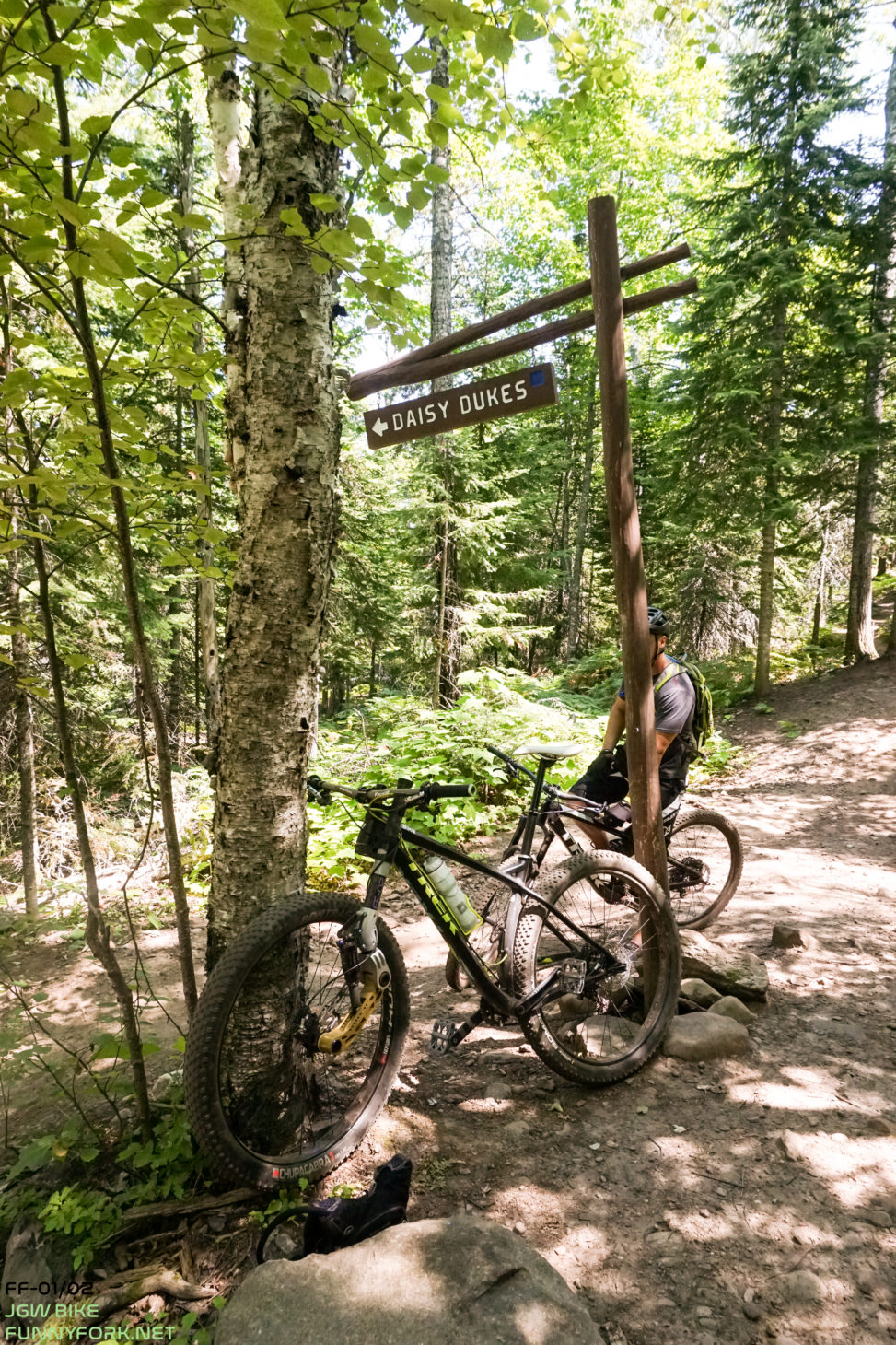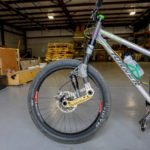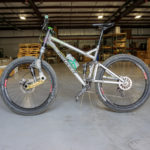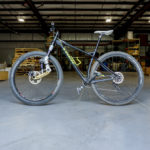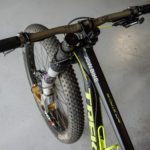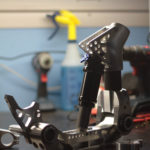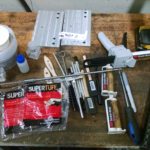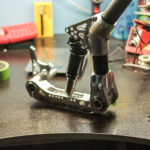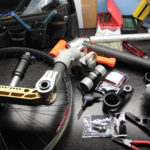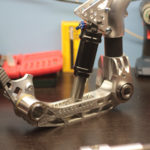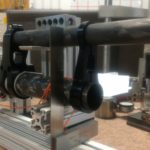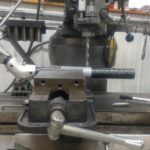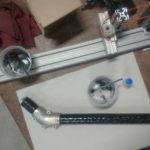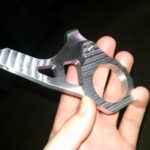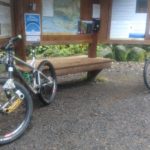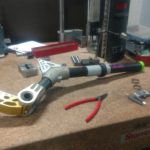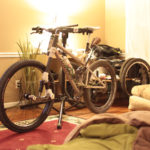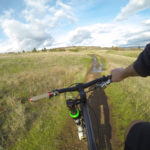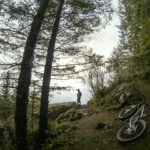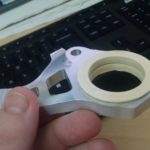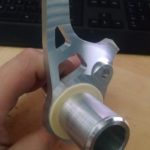The Funny Fork project started as the simple desire to understand the handling characteristics of suspensions systems which were non telescopic in nature. Having few modern interpretations of linkage suspension systems available to test and tinker, I set about creating one. My goal was a prototype which would allow for a variety of setup options accommodating a number of bicycle frames, travel requirements, and tire sizes. Above and beyond these requirements were adjustments specific to linkage forks; these included the pivot position, and brake forces.
The resulting design has been built into two interpretations which I’ve labeled the FF-01 and FF-02. Both builds use different tubing construction, and pivot geometry which result in different steering and handling characteristics.
Funny Fork FF-01/02
Specifications
Travel- range 80mm-145mm
Axle to Crown- range 490mm-550mm
Spring/Damper- 6.5in-8.5in eye to eye, 1.5-2.5in travel
Offset- 40-60mm*
Tire Size- 2in-4.5in
Construction
Strut – Carbon Tubing, Machined Aluminum, Bonded Sub-Assembly
Swingarm – Machined Aluminum
Axle – Single Sided, Machined Aluminum
Brake- Floating Brake with Titanium/4130 Linkage
Pivot- 30mm Bearings
Hardware- Titanium and Steel
So how does it ride?
Well that all depends on how it is setup. When geometry is setup to be as similar to a telescopic as possible (wheel path is always constrained to an arc) then handling and riding characteristics feel very familiar with the primary difference being improved small bump compliance and different brake dive characteristics(more on this later). When moving outside this setup we can either grow the wheelbase through its movement or shrink it, this is dependent upon the position of the pivot in relation to the axle. This change in wheelbase effects the bikes ‘trail’, which in turn changes the amount of self centering felt in the front wheel. To understand this effect, imagine the wheels on an office chair as having the maximum amount of ‘trail’ and subsequently the wheel aligns to whichever direction the steering center line is pointing. The Funny Fork design allows the testing of wheelpaths resulting in increasing and decreasing trail, and subsequently increasing or decreasing self centering traits. As the project progresses I hope to better understand through feedback and data collection, the effects of these different handling characteristics.
So whats next?
With a little over a season under the FF-01/02‘s belts it’s time to start making improvements. These first two units being development mules meant a large range of adjustment was required and subsequently the addition of weight. Next steps involve weight loss through the addition of carbon fiber and the reduction of complexity through a narrower range of setup options, custom tuned shim stacks for the dampers, and alternate layouts. The process of refining this idea, improving upon it, and learning from riders and the data they gather will be the primary subject of the Josh Gore Works Youtube Channel.
My personal hope is that refinements and improvements ultimately end in the Funny Forks performance converging on that of contemporary offerings.
Thanks to all my friends and family who rode or helped, and the riders I spoke with trail-side who took a spin, your conversations and feedback were valuable and your help moving forward is critical.
If you would like to be apart of this project or to simply keep up through the newsletter submit through the form below.
[gem id=783146]
